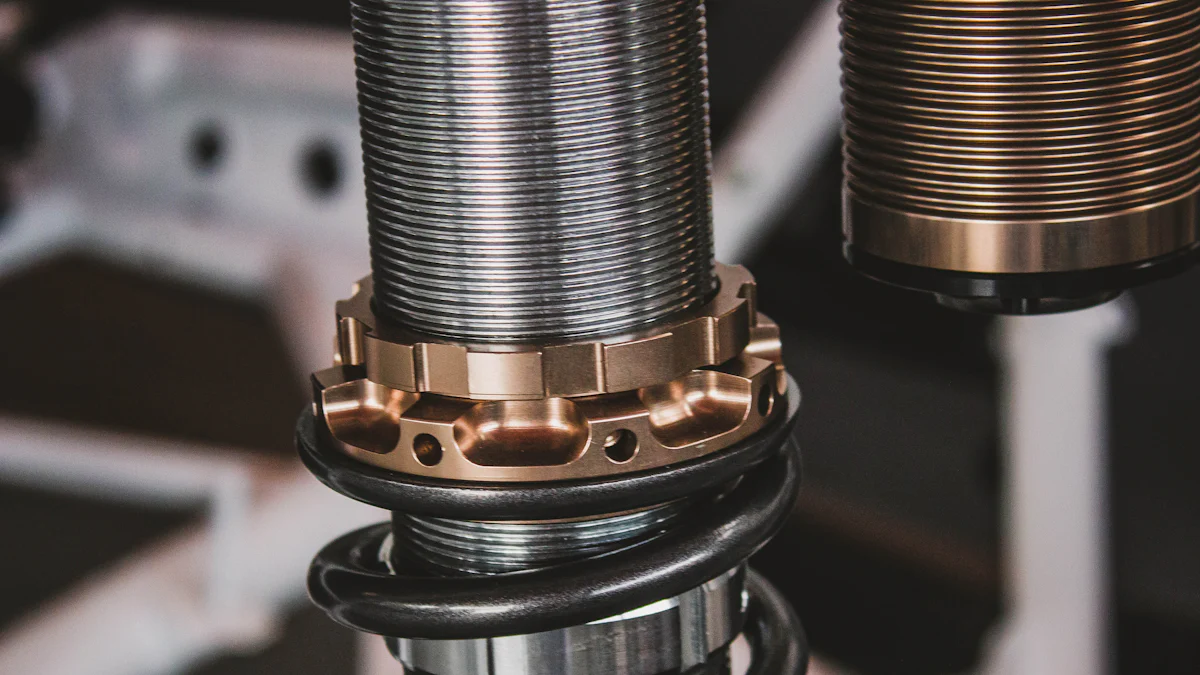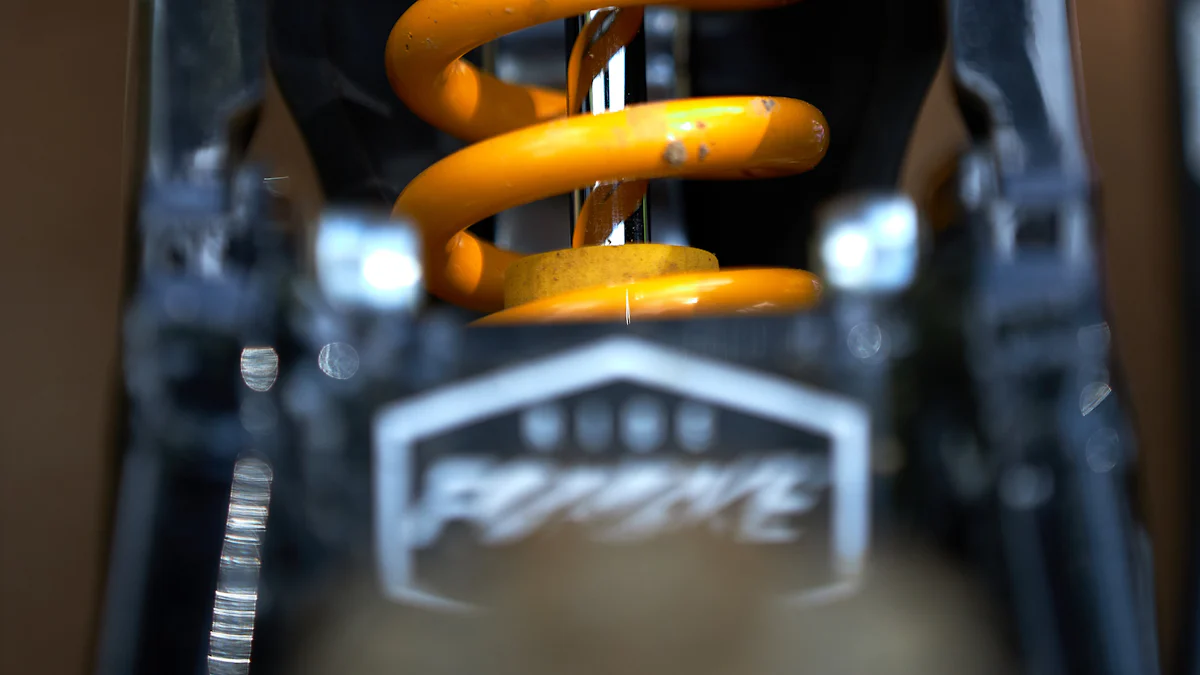
High-performance dampers play a crucial role in modern vehicles. These components absorb chassis distortion, noise, and vibrations to enhance ride quality. The importance of dampers extends beyond comfort; they significantly improve vehicle stability and handling. This blog aims to provide an in-depth understanding of high performance damper technology and its impact on your car.
What Are High-Performance Dampers

Definition and Function
High performance dampers are advanced components designed to enhance vehicle stability and comfort. These dampers absorb distortion energy and dissipate it as heat, improving the overall driving experience.
Absorbing Distortion Energy
High performance dampers play a crucial role in absorbing chassis distortion energy. This process involves converting kinetic energy from road irregularities into heat. The dissipation of this energy reduces vibrations and noise, resulting in a smoother ride.
Damping Tiny Movements
Another key function of high performance dampers is damping tiny movements of the vehicle body. Even minor oscillations can affect ride quality and handling. By exerting damping effects on these small movements, the dampers ensure a more stable and comfortable drive.
Components and Design
The design of high performance dampers incorporates several critical components that contribute to their effectiveness. Understanding these elements helps appreciate their superior performance compared to standard dampers.
Materials Used
Manufacturers use high-quality materials in the construction of high performance dampers. These materials include durable metals like steel or aluminum, which provide strength and longevity. Advanced composites may also be used for specific parts to enhance performance further.
Engineering Aspects
The engineering behind high performance dampers focuses on optimizing their ability to manage energy absorption and dissipation. Precision engineering ensures that each component works seamlessly together, providing consistent damping effects across various driving conditions.
Comparison with Standard Dampers
Understanding how high performance dampers differ from standard options highlights their benefits for vehicle enthusiasts seeking enhanced driving experiences.
Performance Differences
Standard dampers primarily focus on basic shock absorption, while high performance dampers offer superior capabilities. These advanced dampers provide better control over vibrations, noise reduction, and improved handling characteristics. The enhanced design allows for quicker response times to road conditions, ensuring optimal stability.
Application Scenarios
Different application scenarios showcase the advantages of high performance dampers over standard ones:
- Sports Cars: Enhanced handling and cornering abilities make these dampers ideal for high-speed driving.
- Off-Road Vehicles: Superior vibration suppression improves comfort on rough terrains.
- Luxury Sedans: Reduced interior noise levels create a quieter cabin environment.
Benefits of High-Performance Dampers
Enhanced Ride Comfort
Reducing Road Bumps Impact
High performance dampers significantly reduce the impact from road bumps. These advanced components absorb kinetic energy from road irregularities. This absorption transforms the energy into heat, minimizing vibrations and jolts. The result is a smoother ride, even on uneven surfaces. Drivers and passengers experience less discomfort during travel.
Quieter Vehicle Interior
A quieter vehicle interior enhances the driving experience. High performance dampers play a crucial role in noise reduction. By absorbing vibrations, these dampers prevent noise from entering the cabin. The materials used in these dampers also contribute to sound insulation. A quieter interior allows for more enjoyable conversations and a peaceful environment.
Improved Vehicle Stability
Suppressing Vibration
Vibration suppression is essential for vehicle stability. High performance dampers excel in this area by managing energy dissipation effectively. These dampers convert kinetic energy into heat, reducing oscillations and vibrations. This process ensures that the vehicle remains stable under various driving conditions.
Increased Handling and Cornering
Improved handling and cornering are vital for high-speed driving and maneuverability. High performance dampers enhance these aspects by providing better control over the vehicle’s movements. These dampers respond quickly to changes in road conditions, ensuring optimal stability during turns and sudden maneuvers. Enhanced handling leads to safer and more precise driving experiences.
Safety and Performance
Better Traction and Braking
Safety on the road depends on effective traction and braking. High performance dampers improve both by maintaining consistent contact between tires and the road surface. These dampers manage weight distribution during acceleration and deceleration, enhancing grip and control. Better traction results in more reliable braking performance.
Reduced Stopping Distance
Reduced stopping distance is critical for avoiding collisions and ensuring safety. High performance dampers contribute to shorter stopping distances by stabilizing the vehicle during braking events. These dampers minimize body roll and maintain tire contact with the road, allowing for quicker response times when brakes are applied.
Types of High-Performance Dampers

Monotube Dampers
Design and Function
Monotube dampers feature a single tube design that houses both the piston and hydraulic fluid. This design allows for better heat dissipation, which enhances performance during prolonged use. The high performance damper uses a floating piston to separate the gas and oil chambers, preventing aeration and ensuring consistent damping force. The monotube structure provides a more responsive ride by quickly adapting to changes in road conditions.
Use Cases
Monotube dampers excel in high-performance applications where precise handling is crucial. Sports cars often utilize these dampers for their superior responsiveness and stability at high speeds. Off-road vehicles also benefit from monotube dampers due to their ability to handle rough terrains effectively. Enthusiasts seeking improved cornering abilities will find these dampers ideal for track days or spirited driving sessions.
Twin-Tube Dampers
Design and Function
Twin-tube dampers consist of an inner tube (working tube) and an outer tube (reserve tube). The hydraulic fluid flows between these tubes, providing a cushioning effect that enhances ride comfort. Unlike monotube designs, twin-tube high performance damper systems use a base valve to control fluid flow, offering smoother transitions over various surfaces. This configuration ensures durability while maintaining effective damping characteristics.
Use Cases
Vehicles requiring balanced performance and comfort often employ twin-tube dampers. Luxury sedans benefit from the smooth ride quality provided by these dampers, reducing interior noise levels significantly. Family SUVs also utilize twin-tube designs for their ability to absorb road imperfections without compromising passenger comfort. These dampers suit daily drivers who prioritize a comfortable yet controlled driving experience.
Remote Reservoir Dampers
Design and Function
Remote reservoir high performance damper systems incorporate an external reservoir connected via hoses to the main damper body. This setup increases fluid capacity, improving cooling efficiency and reducing fade during intense use. The remote reservoir allows for finer tuning of damping characteristics by adjusting pressure settings independently from the main unit. This flexibility makes remote reservoir dampers highly adaptable to various driving conditions.
Use Cases
Remote reservoir high performance damper systems are popular in motorsports due to their exceptional adaptability and cooling capabilities. Rally cars benefit from these dampers’ ability to maintain consistent performance under extreme conditions, such as rough terrains or long-distance stages. Off-road enthusiasts also prefer remote reservoir designs for rock crawling or desert racing, where sustained damping performance is critical.
Installation and Maintenance
Installation Process
Tools and Equipment Needed
Installing high-performance dampers requires specific tools and equipment. The following list outlines the essentials:
- Socket Set: A comprehensive socket set is necessary for removing and installing bolts.
- Torque Wrench: This tool ensures that all bolts are tightened to the manufacturer’s specifications.
- Jack Stands: These provide stability when lifting the vehicle for damper installation.
- Spring Compressor: This tool compresses the springs safely during damper replacement.
- Pry Bar: Useful for maneuvering components into place.
- Safety Gear: Gloves, safety glasses, and other protective gear ensure a safe working environment.
Step-by-Step Guide
- Preparation
- Park the vehicle on a flat surface. Engage the parking brake.
- Use jack stands to lift and secure the vehicle safely.
- Remove Old Dampers
- Locate the existing dampers. Refer to the vehicle’s manual if necessary.
- Use a socket set to remove the bolts securing the old dampers.
- Carefully detach the dampers from their mounting points.
- Install New High-Performance Dampers
- Position the new damper in place. Align it with the mounting points.
- Insert and hand-tighten all bolts initially to ensure proper alignment.
- Use a torque wrench to tighten each bolt according to manufacturer specifications.
- Reassemble Components
- Reattach any components removed during disassembly, such as wheels or suspension parts.
- Lower the vehicle from jack stands carefully.
- Final Checks
- Inspect all connections for security and proper alignment.
- Test drive at low speeds initially to ensure everything functions correctly.
Maintenance Tips
Regular Inspections
Regular inspections of high-performance dampers are crucial for maintaining optimal performance:
- Visual Inspection
- Check for signs of wear or damage on damper bodies, mounts, and bushings.
- Look for fluid leaks around seals or connections.
- Functional Testing
- Observe ride quality during regular driving conditions; note any unusual vibrations or noises.
- Perform a bounce test by pressing down on each corner of the vehicle; it should rebound smoothly without excessive oscillation.
- Scheduled Maintenance
“Routine maintenance checks can prevent long-term issues,” advises experts from AMCA member companies specializing in life-safety dampers.
Common Issues and Solutions
High-performance dampers may encounter common issues over time:
- Fluid Leaks
Solution: Replace seals or entire damper units if leaks persist despite seal replacement efforts.
- Excessive Noise
Solution: Inspect mounting hardware; tighten loose bolts or replace worn-out bushings as needed.
- Reduced Damping Performance
Solution: Check fluid levels within monotube designs; refill reservoirs where applicable according to manufacturer guidelines.
- Corrosion on Metal Parts
Solution: Clean affected areas regularly using appropriate cleaning agents; apply anti-corrosion treatments periodically based on environmental exposure levels experienced by your vehicle’s undercarriage components.
By adhering strictly to these installation steps along with consistent maintenance practices outlined above, car enthusiasts can maximize both longevity as well as effectiveness offered by their chosen high-performance damping solutions while ensuring continued enjoyment derived from enhanced driving experiences provided through superior handling characteristics delivered via these advanced automotive technologies!
High-performance dampers offer significant benefits for modern vehicles. These components enhance ride comfort, stability, and safety. The advanced design and materials used in high-performance dampers provide superior performance compared to standard options.
“Routine maintenance checks can prevent long-term issues,” advises experts from AMCA member companies specializing in life-safety dampers.
Car enthusiasts should consider investing in high-performance dampers for improved driving experiences. Future advancements in damper technology will likely bring even greater enhancements to vehicle performance. Enthusiasts should stay informed about these developments to make the best choices for their vehicles.
Post time: Jul-26-2024



